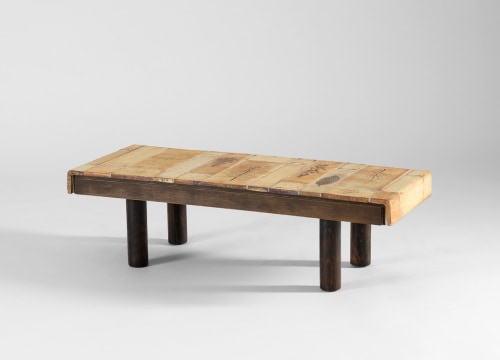

Roger Capron (1922-2006) was born in Vincennes, and studied applied arts at the École des Arts Appliqués in Paris in the early 1940s
After working at the school briefly as a drawing instructor, he moved to Vallauris, and in 1946 a foundling interest in ceramics led him to establish a small workshop, known as l’Atelier Callis, with the artists Jean Derval and Robert Picault. Here, throughout the late 1940s and early 1950s, they made lamps, accessories, and sculptures of all kinds, helping to re-establish the region's ancient reputation for ceramics.
In 1952 Capron set out on his own, setting up shop in an empty factory nearby. By 1957 Atelier Capron had developed a reputation beyond France for deploying a particular ceramic savoir faire in furniture production. In addition to creating uniquely interesting objets, Capron had a special flair for adorning his furnishings with ceramic elements—in particular, with inset glazed or enameled earthenware tiles. Like Picasso, who also had a workshop in the region, Capron’s output was impressive, his styles varied; but his work is still, nevertheless, recognized today for its unique blend of playful colors and its geometric and naturalistic subjects—all extremely elegant, and yet entirely, consummately livable.
By 1980 his factory employed well over 100 people—but despite its popularity and steady expansion, in 1982 it was forced to close, enfeebled by the financial downturn and new competition from mass produced imitators.
During his career, Capron was the recipient of an award at the 1954 Milan Triennal, the Prix du Ministère des Affaires Culturelles in 1968, and the International Grand Prize for Ceramics in 1970 and the Prix Spécial de l'Architecture in 1980. His works have been shown at the Musée National de la Céramique and the Musée Magnelli.
